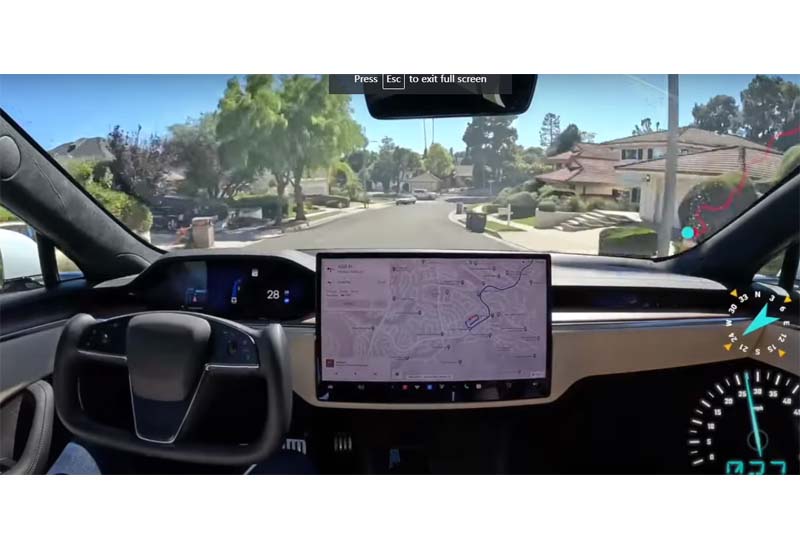Tesla’s FSD v13 update marks a significant advancement in autonomous driving technology, introducing dynamic routing capabilities and vehicle-to-vehicle communication that could reshape how we navigate our roads.
Tesla’s implementation of dynamic routing represents a major leap forward in real-time navigation systems. When vehicles detect road closures or obstacles, this information instantly propagates through Tesla’s network, enabling other cars to adjust their routes preemptively. This feature addresses a long-standing challenge in autonomous driving: responding to unexpected road conditions before they become problematic.
The system operates through a sophisticated network of Tesla vehicles acting as scouts. Each car functions as a mobile sensor, collecting and sharing critical road condition data. Unlike traditional navigation systems that rely on scheduled updates, this approach provides instantaneous feedback about road conditions.
Tesla’s AI 3 chip introduces robust security measures essential for reliable V2V communication. The integrated Secure Processor Subsystem (SCS) works alongside a Safety Management System (SMS) to encrypt all vehicle-to-vehicle communications.
The encryption system utilizes private keys stored in isolated memory compartments, preventing unauthorized access to sensitive data. This architecture effectively blocks potential cyber threats while maintaining rapid communication between vehicles.
FSD v13 update introduces an innovative emergency vehicle detection system. Through opt-in audio recording capabilities, Tesla vehicles can now identify approaching emergency sirens and respond appropriately. These brief recordings, limited to 10 seconds, remain anonymous and unlinked to specific vehicles or user accounts.
Tesla’s commitment to user privacy shows in their approach to data collection. While the system gathers crucial information for safety features, it maintains strict separation between operational data and personal identifiers.
Such as the autonomous vehicle gridlock in San Francisco, highlight the importance of effective V2V communication. Tesla’s system aims to prevent similar incidents through proactive communication between vehicles.
Tesla’s approach to V2V communication represents a departure from traditional implementations. By focusing on specific use cases and leveraging existing hardware, they’ve created a more cost-effective and practical solution.
The FSD v13 update showcases Tesla’s commitment to dynamic navigation and sets a new standard for autonomous driving technology. It’s clear that Tesla’s full self-driving capabilities are steering toward an increasingly connected future.
Related Post
Tesla FSD v13.2: Vision-Based, A Paradigm Shift in Autonomous Driving Technology
Vision-Language-Action Models: Revolutionizing Autonomous Driving Technology in 2025
Tesla FSD v13 Shows Superior Performance on HW4: What Owners Need to Know
